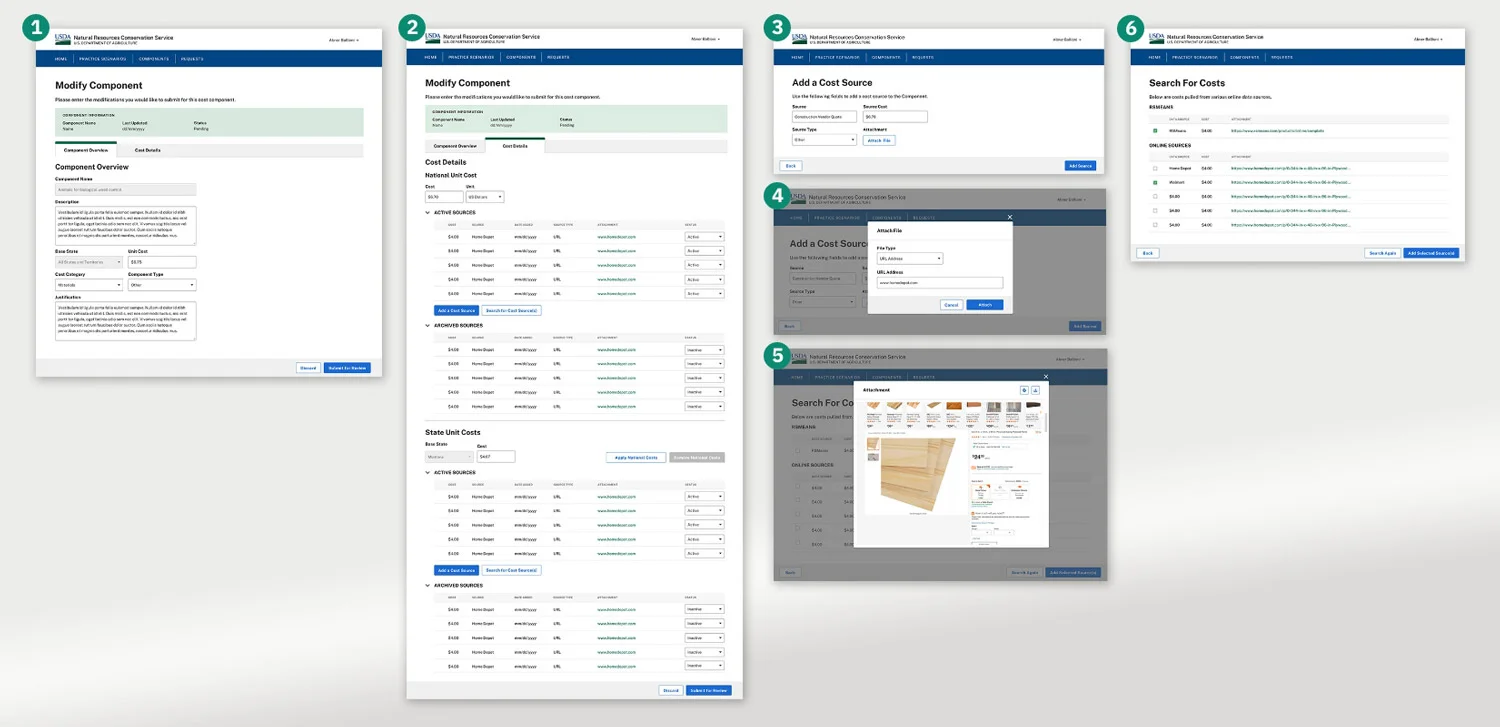The National Resource Conservation Service’s (NRCS) goal is to help farmers seamlessly incorporate environmentally conscious practices into their business. Unfortunately—but not surprisingly—the NRCS’s current system is outdated, opaque, and impractical for agents to use in the field.
Founded on the principals of human-centered design, this new NRCS Spend Plan will help consolidate resources, encourage more transparency and collaboration within the organization, and give Field Agents and National Scenario Managers (NSM) better control over how they create and distribute regionally-accurate conservation plans.
The Problem:The current NRCS spending system is bloated with unused, duplicative items (Components) and groups of items (Scenarios). The information is also split among different systems that use outdatted UI and the entire process is filled with unecessary steps.
This makes the system difficult to search, impossible to manage, and taxing to use.
The Opportunity:Large, surpluse hardware stores already offer open-source APIs on all their products, and farmers are meticulous in finding the best deals from locals stores. Everything is there, we just need an intuitive digital tool that ties it all together.
The Solution:Similar to building a deck of cards, we built a way for field agents and farmers to find accurate conservation equipment and add it to their own, regionally based Scenarios.
This app can be taken on a digital pad or laptop to the field, bringing a new way to help our farms be more environmentally friendly.
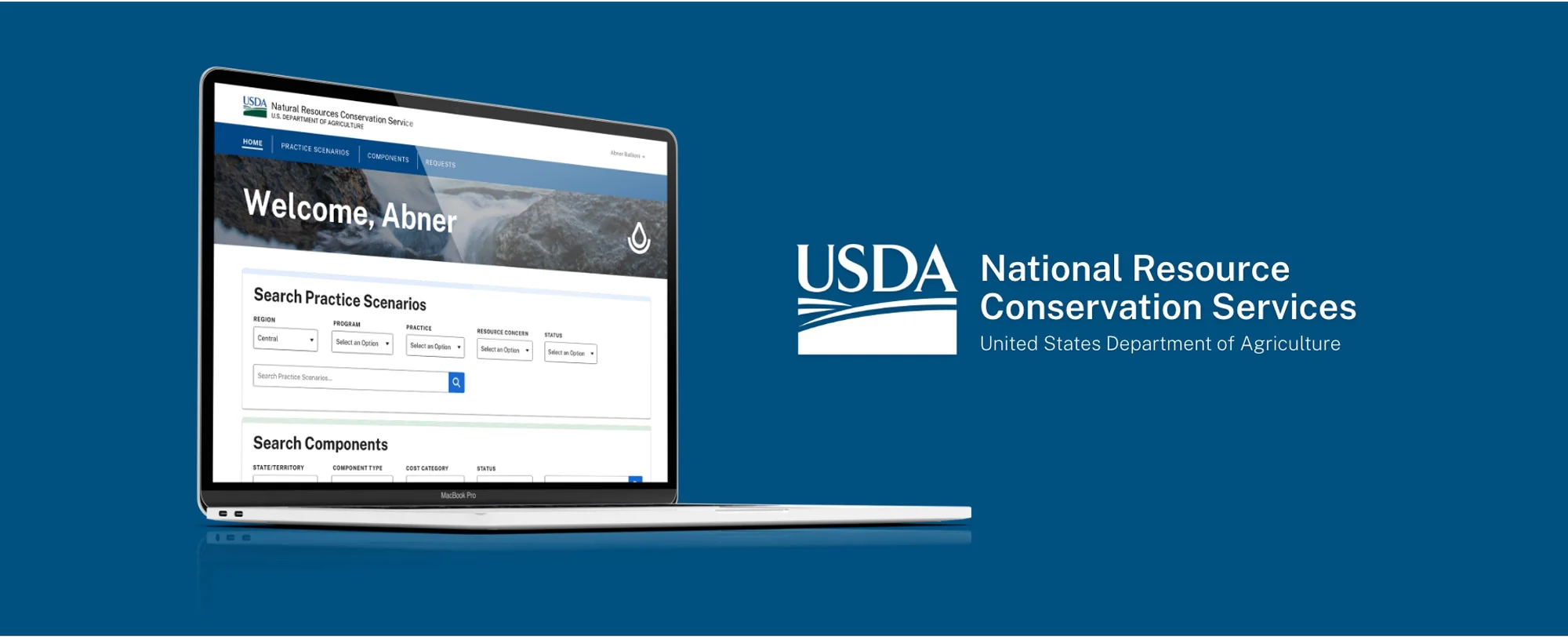
Components:
A Component is a farming related item or service, such as digging a well or fencing material. Each has an individual
cost and each cost fluxes based on the region, quality, and farming practices.
Scenarios:
Scenarios are farm-specific situation that a group of Components have been assigned to. For example, putting solar
panels on large barn roof is a project— or Scenario —made up of items— or Components —such as wire, solar panels,
fasteners, paint, etc.
Conservation Spend Plan: An itemized list associated to a particular Scenario. Think of it as an agreement that, once reviewed, the Government signs off on and the farm get its funds.
Using a combination of Components and Senarios— with the ability to individually customize each —field agents can piece together and submit accurate Conservation Spend Plans in a fraction of the time.
Components— the fundamental items that make up the cost of a Spend Plan —rely on research and user input to accurately determine their value. These requests are when a field agent or farmers goes out and finds a new, local cost for an item and then submits that cost in order to have the Component’s cost adjust within the application. NRCS gets thousands of these requests every year. That cost is then approved or denied by a Cost Team and, if approved, passed to a manager for any final adjustments.
In order to better understand the current state of Cost Harvesting, we hosted digital workshops with both the Accenture Consulting team and NRCS staff to discuss the steps, roles, and tools involved. We also explored future opportunities that would incorporate automation of prices from creditable third-party APIs.
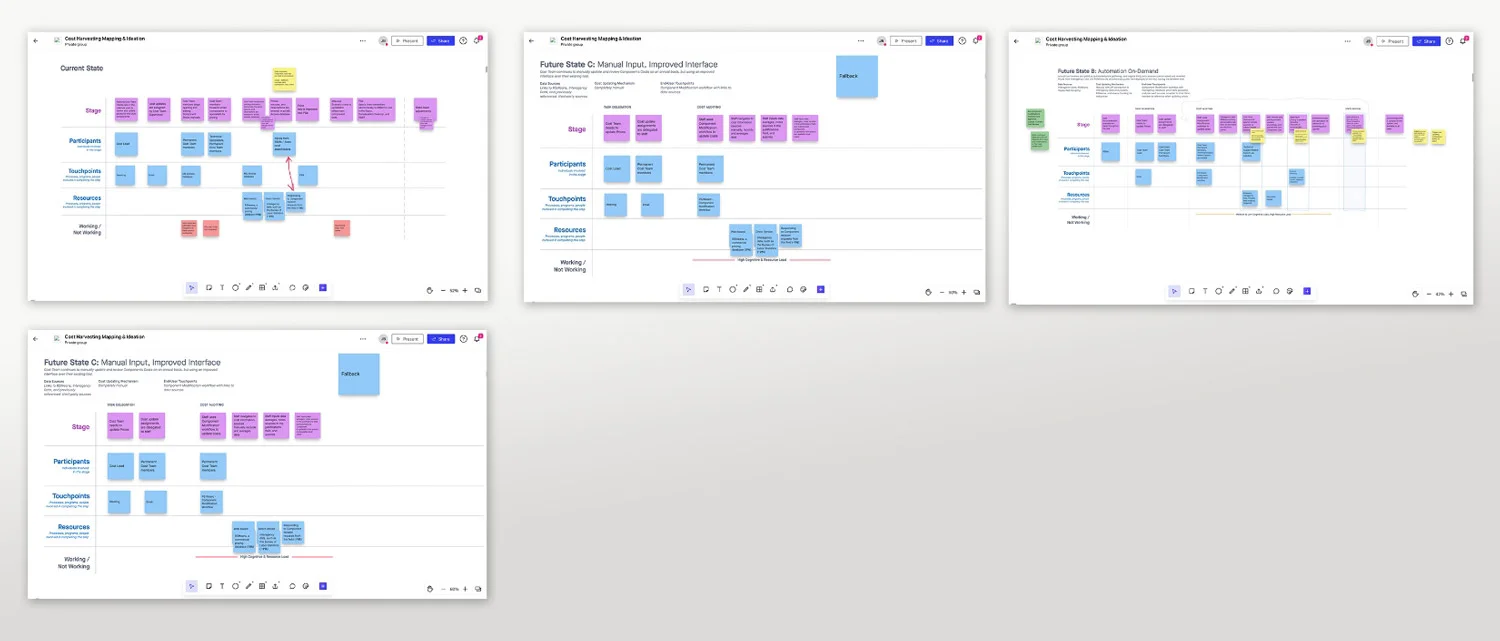
To best understand the cost harvesting process, we designed an interactive journey map in Invision. This map was crucial in this seven-month project to record different roles and responsibilities, understand the overall processes of NRCS, and translate those processes into a digital prototype.
On the far left (1) we listed the two main character that have roles harvesting: Regional Scenario Manager, and Cost Team Member. (2) At the top we listed all the necessary steps required when harvesting and reviewing cost units on a component. (3) Next, we listed out the individual actions a user takes during the process. This helped us align where certain wires should be in the user’s journey. (4) Lastly, built initial concept wires that we presented to the client and adjusted based on everyone's feedback.
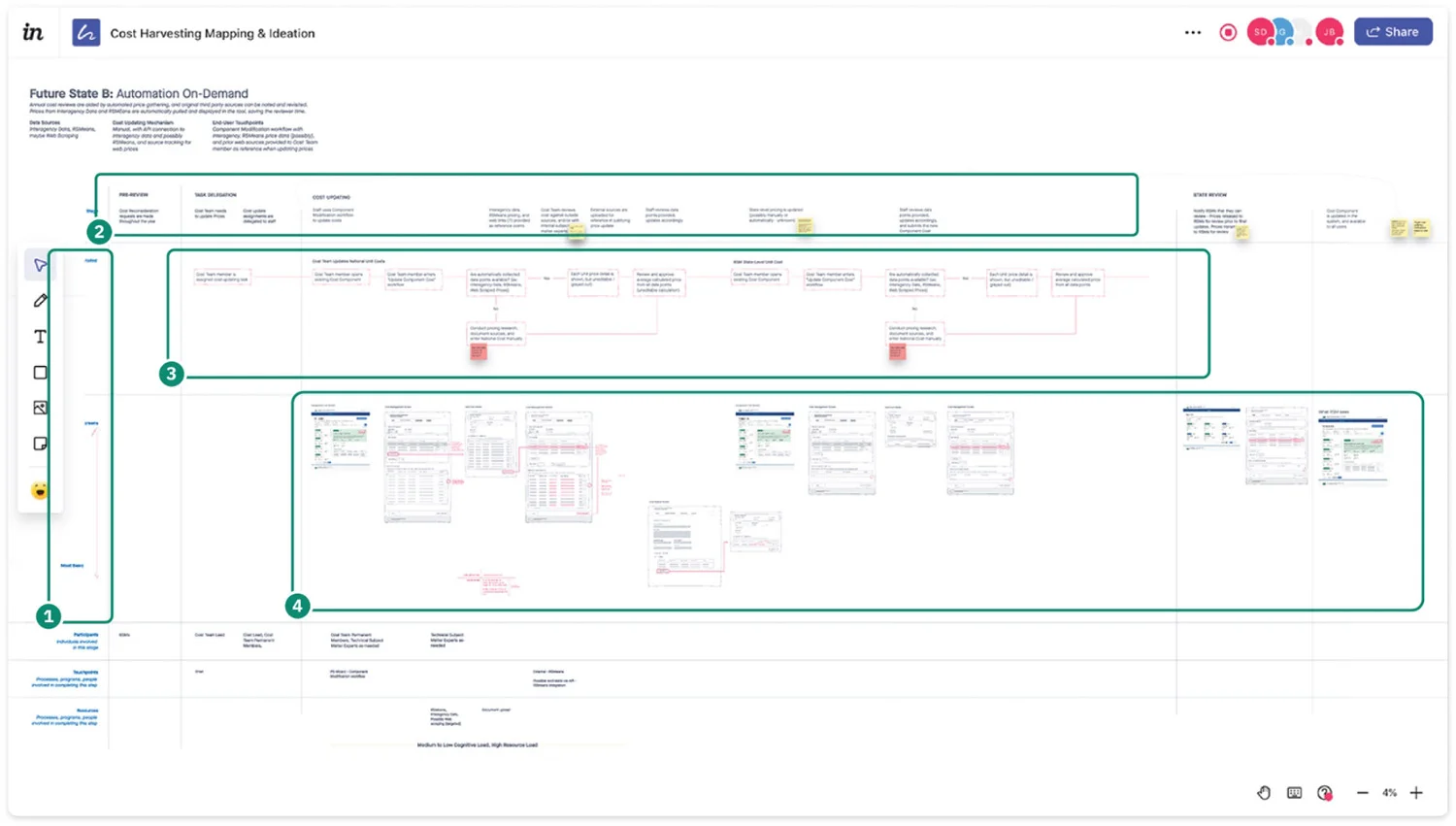
Once we had completed the workshop, I quickly polished up our concepts before presenting them to the client.
With these loose wires, healthy participation, and a lot of coffee, we were able to record all the functions and actions needed for a successful prototype of the NRCS Spend Plan.
We boiled it down to 5 functions that the NRCS Spend Plan needs to do in order to be considered a success.
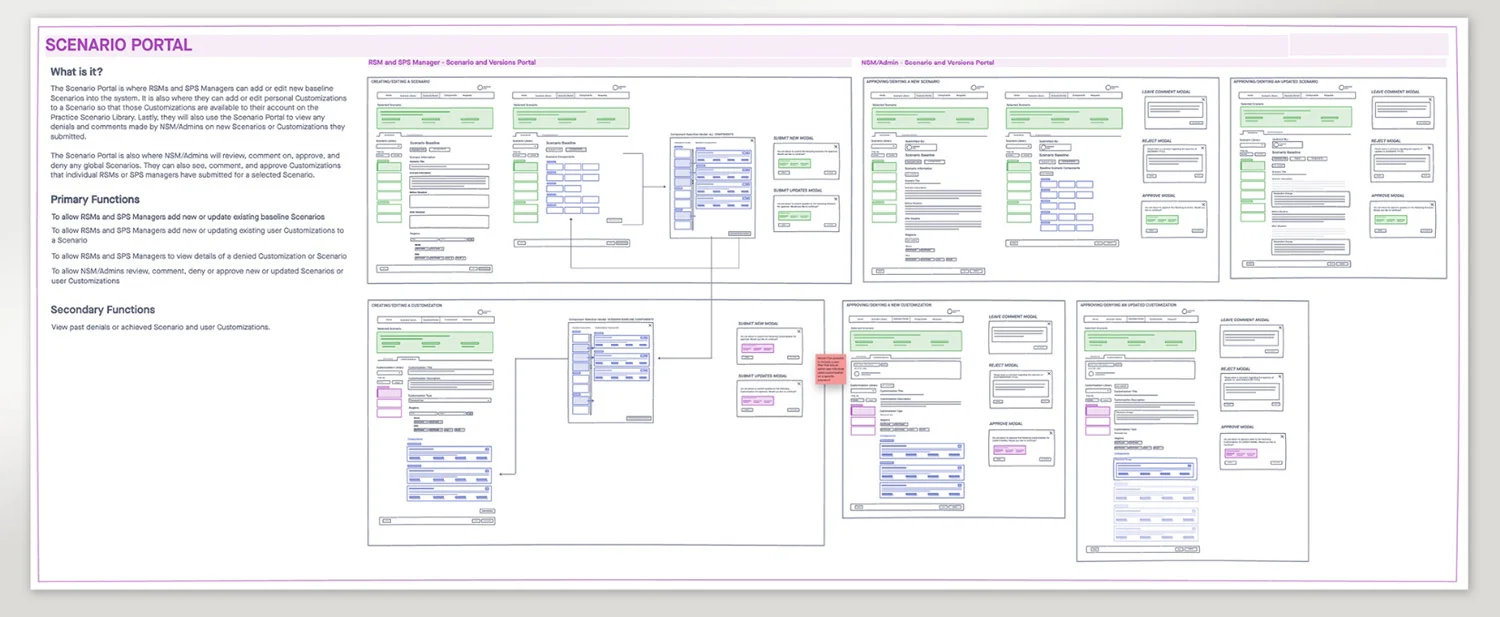
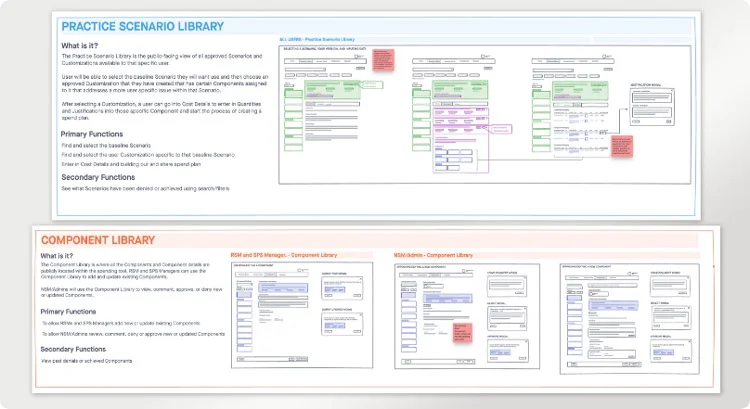
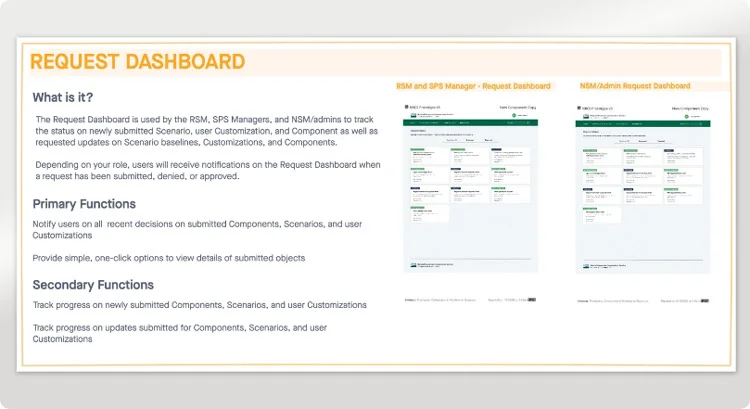
Once we had the functionality and actions of the application figured out, it was time to design a working prototype. I built our prototype using the FPAC design system . The prototype was interactive and synced with a script of actions we wanted client/users to go take for future testing.
While at a farm a NRCS Field Agent can (1) search and select an existing Scenario, made up of Components, that matches what the farmer needs. (2) They can also request to customize these Scenarios. (3) Field agents can view these requests and (4) view the details of the customization, (5) and add/remove any Components before submitting it to HQ.
These customization requests will then be (6) reviewed by an NRCS Field Manager. They'll (7) make any final adjustments and (8) leave comments before approving or denying the request.
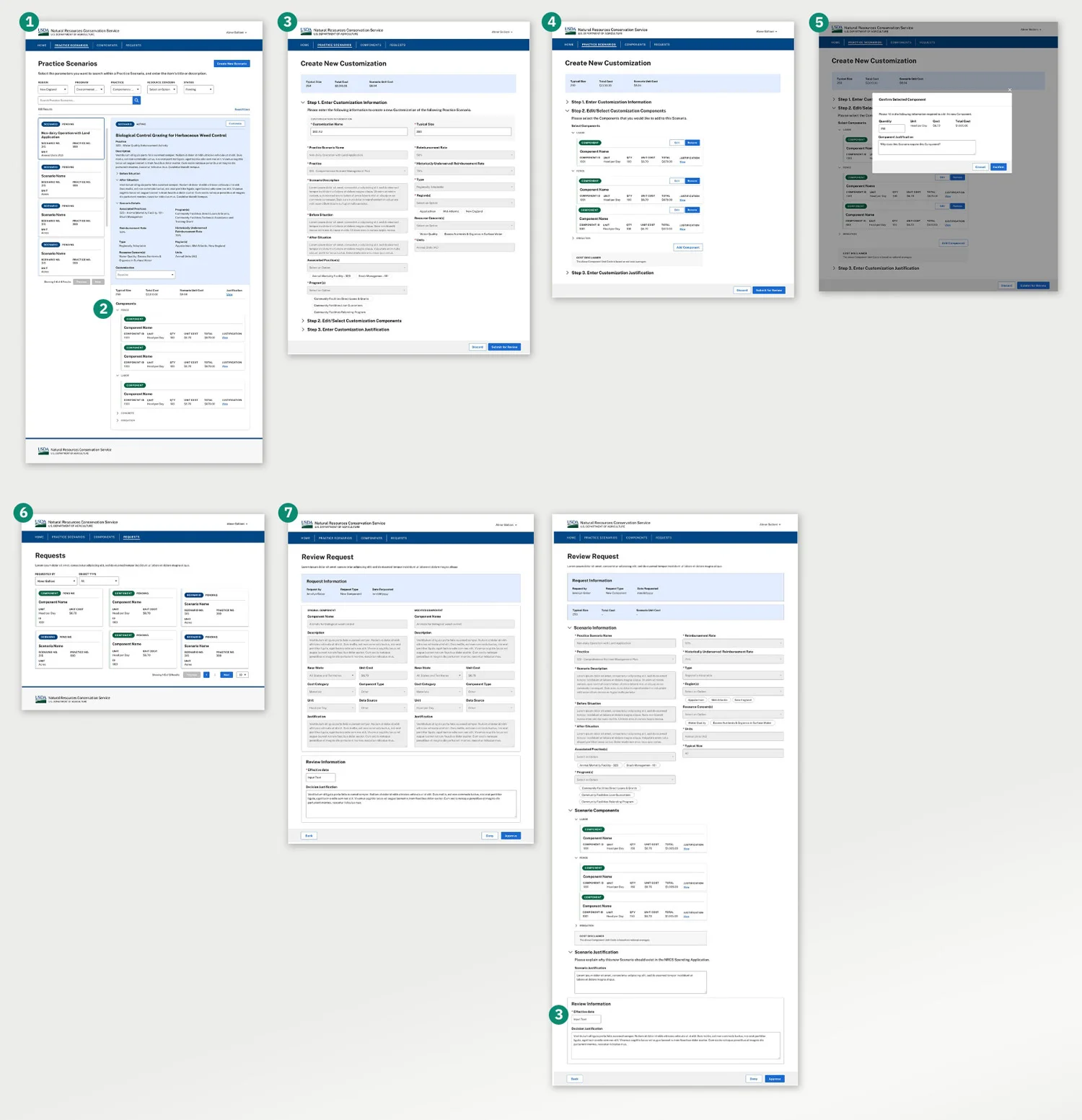
We also mocked up the process of searching for Components, editing them, and adding Components to new and existing Scenarios.
This processes includes (1) searching within the Component Portal, (2) steps of creating a new Component, (3) the default screen for the Component Portal, and (4) the "no results" page.

Lastly, we created wires for the process of modifying existing Components within the systen. This process included (1) modifying the name and description, (2) editing/updating the existing prices for a particular Component, (3) adding a new cost source— including (4) the source information and (5) evidence of the item and cost. Lastly, we included (6) the ability to Cost Harvest, or pull and compare prices across an assortment of different company's APIs.
With this prototype, we hope to show the usefulness this technology will be to both Field Agents and the National Resource Conservation Services's mission to deliver conservation solutions to protect natural resources and feed a growing world.
